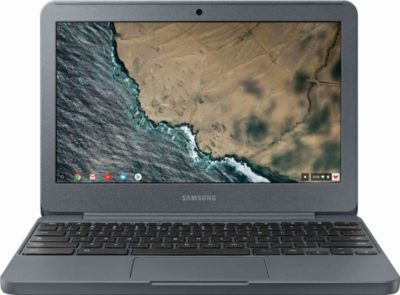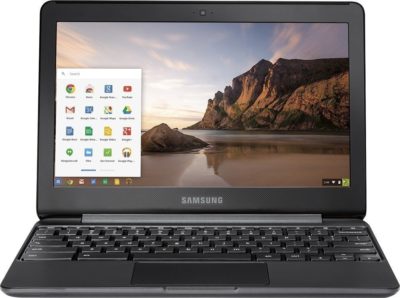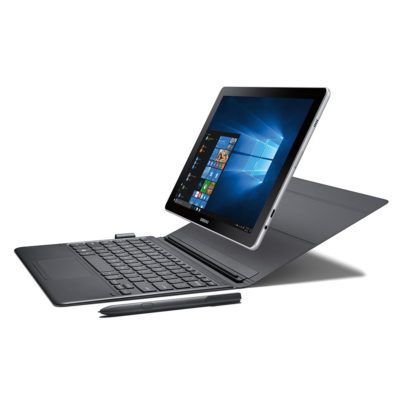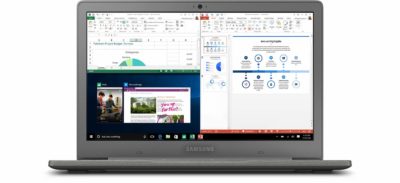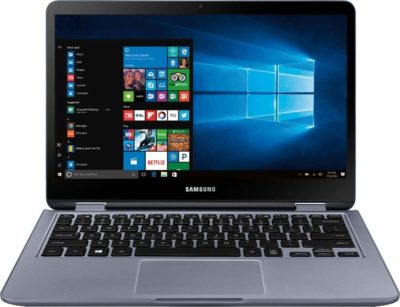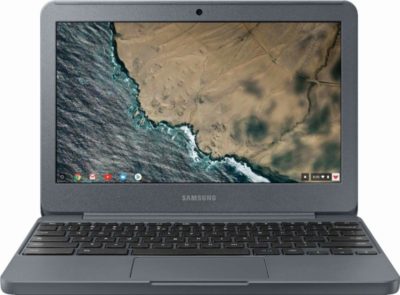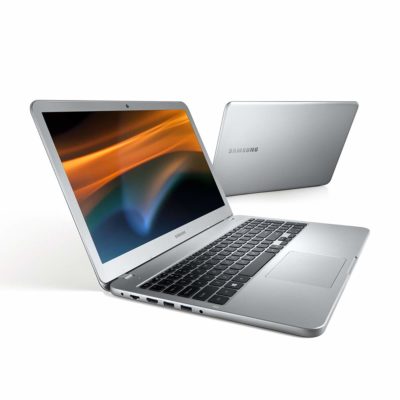Best Samsung Laptops Review
Since its inception into the electronics industry in the 1960’s, Samsung has evolved to become a global icon of craftsmanship and innovation as evidenced by its popularity and highly rated electronics devices. The superior quality behind its reputation is unquestionable, which is probably why you decided to look into how you can go about finding the best Samsung laptop for your specific needs.
This review is up to assist you with that, through a comprehensive discussion on Samsung laptops, specifically focusing on the key factors you need to consider and a look at some of the top 7 best Samsung laptops on today’s market. We have also answered some of the frequently asked questions.
Top 7 Samsung Laptops
Which type is the best fit?
The type of laptop you choose can grossly affect the kind of experience you have, which is why it’s particularly important to wrap your head around the types of laptops available in existence. Laptops can be classified based on the operating system in use (as discussed above), primary purpose and general functionality.
Purpose
Based on the primary purpose, laptops can be broadly classified into business, generic, student and gaming laptops.
Business laptops
As the name suggests, business Laptops target business and other professional use cases. They typically come in with exquisite professional designs, enhanced performance, and solid construction quality. They also tend to come in with special hardware and software features to enhance overall business productivity.
Therefore, if you are in for a machine to complement your business or professional life, expect a high capacity, solid construction with great tools for maximum productivity such as Windows professional edition. The downside is that these enhancements tend to inflate the price tag higher than other types.
Gaming laptops
These laptops are great if you are looking to involve highly advanced applications. Due to their top-of-the-range performance specs, they can easily handle most modern and highly advanced gaming softwares and a wide range of data intensive applications such as 3D modelling, video editing, and graphic simulations. This translates into higher price tags than most business laptops.
Generic
These are basic laptops which are not necessarily biased towards particular use cases, but rather focus on providing a well-balanced set of features to sustain a wide range of uses. They are the kind of laptops you can easily use to surf the Internet, run office tools(such as word processors and spreadsheets), and various basic entertainment software while affording the capacity to run some fairly sophisticated programs. Due to lower performance features, they tend to come in with a more affordable price thus they are the usual choice for mid-range budgets.
Functionality
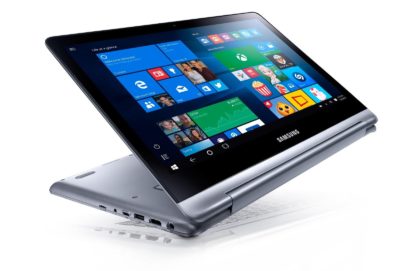
Laptops can be classified into basic clamshells or convertibles/2-in-1’s based on the modes in which they operate. Convertibles are designed to provide the user with the best of two things: a standard laptop, and an advanced tablet. Most convertibles incorporate a touchscreen and a flexible hinge system which allows the screen to be bent backwards at a 360 degree angle, which effectively eliminates the keyboard.
Another variant of convertibles eliminates the keyboard by allowing complete detachment. Convertibles are great if you are looking to benefit from some of the advantages offered by tablets, such as stylus usage, ultra-portability and prolonged battery life.
Does it have enough processing power?
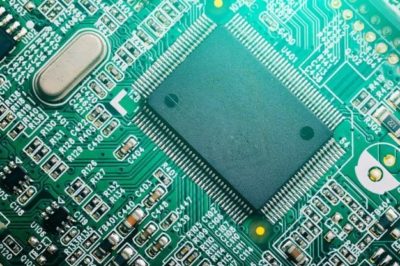
The processing unit is responsible for conducting all the essential calculations needed to run a variety of computer programs. Whatever you do, from a single press on the keyboard to running a file on the computer; the processor is the main component that actually affects the command. There are different processors with different abilities thus it’s important to be aware of a number of processor-related specifications in terms of what they mean and how you can go about comparing between devices.
Processor cores
If you’ve had a basic experience with computers for sometime, you’ve probably heard or read something like dual-core or quad-core processors, and have probably wondered what the terminology is all about. A processor is essentially an integrated circuit. It can be an integration of a number of sub-circuits (known as processing units) working together, or just a single circuit without any apparent divisions. The word “core” refers to a processing unit within the processor.
Single-core processors have one processing unit where as multi-core processors such as dual-core and quad-core processors have at least two processing units, which can execute programs concurrently, thus making the computer more efficient when handling multiple programs. The most recent and advanced models tend to incorporate a greater number of cores to handle increasing demands from modern programs.
Clock speed
()Clock speed defines how efficient or quick the processor is. The unit of measurement is GHz, and the higher it is, the faster the computer is, at a variety of tasks such as document and screen loading. ()
Some processors come in with the ability to change speeds depending on the tasks at hand. This is possible through special speed-altering technology which is integrated in the processor, such as Turbo boost(for Intel processors) and Turbo Core technology(for AMD processors). The Turbo turns on to take the processor beyond the base speed when highly demanding tasks are involved, thus allowing the computer to adapt accordingly.
Cache
You might have noticed that at times, opening multiple files at once makes the computer slower until they are all open. The reason behind is that all the operations you try to execute pass through the memory cache before the processor works on them. This makes the size of the memory cache important, as greater memory size implies more data processed per unit time. 4 Megabytes of cache are considered ideal for medium and heavy use cases.
RAM
Everytime your laptop tries to execute a task, like playing a music file, it is first stored on a piece of hardware known as Random Access Memory(RAM) before it is accessed by the processor. More space on the RAM implies more room for more tasks, which essentially translates into more efficiency. Consequently, huge softwares/applications need more RAM to run in a more effective and efficient way.
RAM spaces range from 4GB to 32GB, and your choice depends on your need. Let’s go through a round-up of the appropriate RAM sizes needed for different use cases.
4GB-6GB
These are common in entry and mid-range priced laptops, and are great for medium use cases such as Internet browsing, social media usage, watching videos and running basic office applications such as word processing and spreadsheet programs.
8GB
These offer extra space to handle both medium and extensive programs. Examples of use cases include HD film streaming, Video editing, Gaming, Music production and photo editing.
16GB-32GB
These are often part of powerful devices aimed at handling extremely data intensive tasks such as professional graphic designing, video editing, highly advanced gaming softwares and professional music production.
How much storage space do I need?
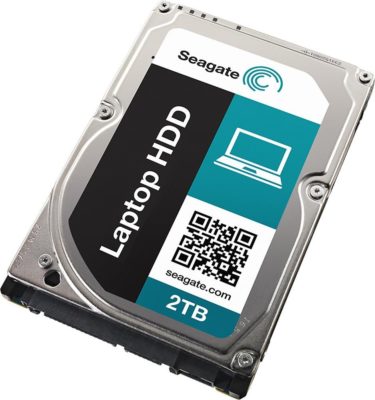
Storage space defines the amount of information or data your computer can hold. Everything, from a single music file to the operating system itself eats up some space, and the main storage device responsible for this is the Drive. For most modern computers, the common units of measurement for storage are Gigerbytes(GB) and Terabytes(TB).
The space differs between mainstream devices, ranging from around 128 GB to 2TB. Other high-end devices extend the range beyond 2TB to cater for more specialized and extensive storage needs. There are two main types of storage drives based on the structure and mechanism of function. Let’s have a quick look at each type as each has a different set of strengths and limitations.
Hard Disc Drive
The Hard drive is the commonest and least expensive of the two. The key feature is that it works as a mechanical storage device which uses a special head used to read or write data on a storage platter. The key advantage of this type of drive is that it holds the widest range of storage sizes, extending from around 250GB to around 2TB. The downside is that they can be noisy, less energy efficient and produce a lot of heat during operation.
Solid Sate hard drives
Unlike Hard drives, these drives store information in microchips which are usually integrated into the system. They are faster, more efficient with electric energy, and eliminate the extra heat that comes with an operational hard drive. However, they can be expensive and tend to come with less storage space, as most models fall within the 128GB-500GB range. These are great in cases where performance is more of a critical factor than the actual storage space.
In view of the associated flaws, some manufacturers have so far managed to exploit the benefits of both types by coming up with Solid State hybrid drives. As the name suggests, these combine Hard Drive and Solid State storage to offer optimal performance for a wider range of use cases.
eMMC storage
This is another storage option based on the same technology used by handheld devices such as flash disks and Tablets. It can be found in devices such as convertibles, some Chromebooks and other portable laptops. While it comes handy especially in portable devices which have considerably less space, it is generally less efficient and spacious when compared to the first two types.
Is the display good enough?
The display’s size, overall clarity and comfort features are the key aspects to consider when defining its overall quality.
Size
Display sizes are defined by the size of the diagonal in inches or centimetres, and they fall into three main categories. 15.6 inches represent the standard and commonest size capable of allowing greater amount of detail without sacrificing a lot in terms of portability. It is generally a perfect size if you are not looking to carry it around too frequently.
14 inches presents a medium size which is mostly an ideal size for most backpacks while still affording a lot of space for more details. If you need something smaller, there are options within the 10-12 inch range, which strive to provide ultra-portable options with cutting edge performance features.
Clarity
The clarity of the image on the screen is mainly defined by the screen’s resolution rating. In short, resolution is a term used to describe how much detail the screen can capture at a given surface area. It is commonly measured in dots per inch or pixels, which directly correlates with the screen’s overall clarity. Standard screen typically measure at around 1366×768 dpi while as Full high definition (HD) screens measure at 1920×1080 dpi.
Obviously, full HD screens provide superior quality and can easily integrate with graphic intensive softwares. They also afford more comfort and safety as they assist you with reducing the eyestrain that usually comes with lower quality screen resolutions. Beyond Full HD, there are 4K screens which offer about 4x as much as Full HD screens, but at a significantly higher cost.
Extra features
Apart from resolution and size, other screens travel the extra mile to incorporate extra features such as In-plane switching (IPS), anti-glare and touchscreen technology. IPS technology allows the laptop’s screen to be viewable from multiple angles in space, which can be handy in cases where you have multiple viewers around the computer.
Anti-glare technology features a coating on the surface of the screen which eliminates light reflection thus making the screen equally viewable in both low and high light intensity environments.
Can it effectively communicate with other devices and the Internet?
Any good laptop should connect with a variety of external devices through a number of means. Here is a round-up of the key connectivity options to concentrate on.
Wireless connections
Key wireless technologies include Wifi and Bluetooth. 802.11ac Wifi technology represents the current standard, commonly featured in mid-range and high-end devices. Earlier, but effective versions include 802.11 n, 802.11b and 802.11g. Bluetooth technology provides a wireless alternative to other file sharing options such as USB. The latest Bluetooth technology include Bluetooth 4.1 and 4.2.
USB ports
USB ports are popular due to their efficiency and user-friendliness. They provide a simple plug and play system capable of transferring files at colossal speeds from a wide range of devices. Just like most pieces of hardware, they exist in versions which are basically upgrades trying to live up to the times. The latest USB technology (USB Type-C) goes beyond file sharing to incorporate charging, HDMI and VGA functionality. Other versions with competing speeds but without extra functionality include USB 3.0 and 3.1.
HDMI
If you have ever connected your computer to an external display such as a monitor, any external player or game console, there is a high chance you have used an HDMI cable. A key advantage related to the cable is that it can transfer data intensive files(full HD and 4K video) from your laptop to an external display. This implies that even if your laptop has a lower resolution rating, you can still play high definition videos through an external display.
VGA
VGA is considered a predecessor of HDMI functionality. However, there are a lot of monitors which support the technology. The downside to it is that it does not support high definition and 4k transmission. Since it does not offer anything more than what HDMI cables afford, it’s generally prudent to focus on HDMI functionality if you are expecting to run high definition videos through an external display.
How good is the battery?
If you are considering a device you are expecting to use off the power supply for long hours, it saves you a lot of frustration to closely consider the average battery life. An average battery life of 8-10 hours is ideal to have you covered for almost the whole day if you are expecting occasional or frequent spells outside the main power source.
Samsung Laptops Buying Guide
There are a few questions you need to have clear answers before any serious decisions are made. Let’s get into the ins and outs of the critical factors to bring you closer to your best fit.
Operating System
Samsung laptops come in with two major operating systems namely: Windows and Chrome. In case you are not aware, the term operating system(OS) refers to the platform/main software you use to run different programs on the computer. It is what defines the quality and level of interaction you have with your computer. It is also a major determiner of the kind of programs you will be able to use on the computer.
Due to the diversity of computer users, there are different operating systems; each tailored to a specific set of user preferences. Chrome-based laptops, commonly called Chromebooks, and their Windows-based cousins, offer different functional advantages, which are directly related to the operating systems in use. Let’s have a quick look.
Windows
Windows is the most popular OS in Samsung devices. The OS is powerful, user-friendly, highly secure, and ideal when productivity is paramount. Whether you are completely new to laptops, or looking for extra firepower to handle work documents, Windows fit in quite well as a choice.
The operating system has the same feel and look regardless of the kind of device you use. Whether it’s a standard laptop, smartphone or a convertible, it’s generally easy to figure your way around the device.
Windows 10, which is the latest in the OS’ series, integrates with the same software and accessories which worked with previous versions. This makes it more practical as you do not need to re-download or purchase any more programs after an upgrade.
The OS also works with a wide variety of security programs to allow you a good number of options to choose from. The intrinsic security features auto-update throughout the laptop’s lifespan to ensure that there is continual protection from viruses. When it comes to gaming and other specialized software, Windows has the upper hand compared to other operating systems, as it works efficiently with a wider range of gaming software.
Chrome
If the Internet is the main reason behind having that laptop, Chromebooks offer the best choice on the market. Designed for optimal Internet performance, Chrome is considered the perfect operating system for online-based work and other activities such as social media, online shopping, and E-mails.
The powerful Chrome browser allows enhanced access to Internet and to the Android app store, which is essentially a huge treasure for millions of apps. Additionally, the operating system offers superior Internet security features to make it one of the most secure systems on the market.
7 Best Samsung Laptops
1. Samsung Chromebook 3 XE501C13-K01US –
Through this version of the Samsung Chromebook 3, the brand provides a commendable device for those in search of a gadget that provides just enough to run basic and fairly advanced computer software. Powerful Wifi technology complements a good processor for a great experience with applications such as the Internet, word processors, spreadsheets and various forms of entertainment.
The design is essentially identical to the one adopted by the Samsung XE50 with rather negligible differences in the length and width combinations. It maintains the same color and single hinge clamshell design. It also maintains the 1.8cm thickness and 11.6cm screen diagonal, while the length and width are placed at around 29cm x 20.3cm respectively.
- Processor-2.48 GHz, Intel Celeron N3060 processor.
- RAM-2GB.
- Storage-16 GB eMMC.
- Display Resolution-1366×768 dpi.
- Graphics coprocessor – Integrated graphics coprocessor.
- Connectivity – Wireless connectivity: 802.11ac, Bluetooth. Wired connectivity: USB 3.0, USB 2.0, Audio jacks.
- Operating system – Chrome.
- Battery life – Up to 25 Watt hours.
- Warranty – Non refundable.
- It provides enough processing capacity for moderate uses cases – The 2.48 GHz processor and 2GB RAM are capable of handling most standard software.
- Great battery life battery – Placed at around 25Watt hours, the battery should sustain a whole day of operations off the main power supply.
- Solidly built – The compactness and high quality material used in the construction cater for an enhanced lifespan.
- Great Wifi technology – It comes in with advanced wireless technology and efficient USB connection for enhanced connectivity.
- Low storage space
- It may struggle to efficiently execute advanced programs due to an entry level processor.
2. Samsung 2017 11.6 inch notebook –
This delightful little gadget extends Samsung’s pedigree as a revered producer of ultra-portable Chromebooks. A well-balanced feature set along with a sleek design makes it a worthy item on the option list. It’s especially great when you are looking for nothing more than a descent device you can use anywhere without being bothered by any weight or size issues.
The design follows the same principle adopted by the previous product except for a twist in the finish and hinge system. A broad, single hinge articulates the 11.6 inch screen with a 14cmx8cm base. The total thickness is placed at around 1.3cm as total weight measures at around 1.1kg.
- Processor – 2.48 GHz, Intel Celeron N3060.
- RAM – 4GB.
- Storage – 32 GB eMMC.
- Display Resolution – 1366×768 dpi.
- Connectivity – Wireless connectivity: 802.11ac, Bluetooth 4.0.
- – Wired connectivity: USB 3.0, USB 2.0 HDMI, Audio jacks.
- Operating system – Chrome.
- Battery life – 2 cell Lithium battery 2 watt hours.
- Warranty – Non refundable.
- Enough processing capacity for general professional and home usage – Just as the previous two models, the processor’s base speed combined with a mid-range RAM to cater for a great performance with general usage.
- Rich connectivity profile – It comes in with a well-balanced set of wired and wireless connectivity tools.
- Durable – It features a well-built casing with highly resistant material for a prolonged lifespan.
- Low storage and processing capacity for voracious users.
- It features a comparatively lower battery life.
3. Samsung Galaxy book W620NZKAXAR –
If you’re in need of a premium model that offers unprecedented flexibility while maintaining a killer processor and RAM, the Galaxybook has a lot in its arsenal. Along with a promising performance feature set is an exquisite design with an ultra-portable frame for any outgoing professional who values a complete package of looks and performance. let’s take a closer look at the specifics.
The laptop is a convertible, but unlike the previous model, it features a detachable keyboard to allow the switch to tablet mode. The Silver-back screen measures 10.6 inches while the length, thickness and width measures at 26.1cm x 0.9cm x 17.9 cm respectively.
A modest total weight of about 644g seals the device as one of the most portable and lightweight devices on the list. The compact, all-black keyboard is beautifully constructed with standard key size, vertical travel and horizontal key spacing.
- Processor – Intel Core mY10 Processor
- RAM – 4GB.
- Storage – 128GB SSD
- Display Resolution – 1920×1280 pixels.
- Connectivity – Wireless connectivity: 802.11a/b/g/ac/n, Bluetooth v4.1.
- – Wired connectivity: USB Type-C, Audio jack.
- Operating system – Windows 10
- Power features and Battery life – 2 cell Lithium battery, 10 Watt hours.
- Warranty – Non refundable.
- Versatile- Being a convertible, it allows for more flexibility to suit a wider range of use cases.
- High quality display – It features a higher resolution rating than the standard for full HD devices, thus promising an enhanced performance with graphic intensive applications.
- Enhanced battery life – It provides more than enough for a full day’s work off the AC.
- Sleek and durable construction quality – It comes in with enhanced aesthetics and a cohesively built body.
- Adequate processor and RAM for business and general uses- A 4GB RAM and a 2.5GHz processor should handle both sophisticated and mainstream applications.
- Relatively lower storage space for intensive users.
4. SAMSUNG Notebook NP530XBB-K01US –
Our first pick on the list is one of the most beautiful designs ever seen from the brand and the electronics world at large. A beautifully crafted body and keyboard is complemented by one of the most powerful feature sets for those who are looking for a device they can easily carry along while getting the work done. Let’s delve into the specifics for a more comprehensive look.
The laptop comes in with an elegant Charcoal Gray body, and a delightfully unique keyboard as major design attractions. It has a sleek and beautifully constructed body by all standards, boasting of a rather “portable” dimensional combination of 8.64?(L) X 12.69?(W) X 0.67?(H). The screen size falls at around 13.3 inches, which is a mid-range size capable of accommodating greater amounts of detail.
The keyboard’s rounded and well-spaced keys transform the basic QWERTY keyboard into a beautiful input device that should inspire extra confidence to your work ethic. A centrally placed, and medium-sized touch pad provides for a smooth and highly sensitive surface with multi-touch functionality.
- Processor – 1.1 GHz, Intel Celeron Processor N4000. Can be turboosted to 2.6GHz.
- RAM – 4GB
- Storage – 64GB eMMC drive.
- Display – 13.3 inches, Full HD (1920×1080dpi)
- Graphics and video support – Intel HD Graphics 600.
- Connectivity – Wireless: 802.11ac, Bluetooth v5.0
- Ports and other connections: 1 HDMI, 1 USB-C, 1 USB3.0, 1 USB2.0, UFS & MicroSD Combo, Audio jacks.
- Operating system – Windows 10.
- Battery life – 39 Watt hours.
- Safety and security – Fingerprint sensor, Trusted Platform Module Chip (TPM).
- Great performance features for business and other general uses – 2.5GHz processor, along with a standard 4GB RAM provide an adequate combination for running basic and fairly advanced business and mainstream software.
- Portable – It is a light, ultra-thin, and small-footprint device capable of fitting in most laptop bags.
- Beautifully designed – It features one of the most visually appealing finishes along with a unique and highly attractive keyboard.
- Great display quality- The display size can accommodate fairly large amounts of detail with superior clarity.
- Above-average battery life- Placed at 39 watt hours, the battery should complement the portable frame to sustain long periods off the AC power supply.
- 64GB of storage might not serve you well if you are expecting to store a lot of data in the computer. You might need to incur an extra cost for an external storage device.
- The processor is not exactly ideal if you are expecting data intensive use cases such as highly advanced gaming software and video editing.
- It is pricey.
5. Samsung Notebook Spin NP730QAA –
If you are looking for an ultra portable device which provides the best of an advanced tablet and the versatility of a standard laptop, this device’s profile offers much to be considered a fitting spectacle. It is a brilliantly designed convertible with the capacity to run some of the most advanced software on today’s market. Let’s have a look.
The laptop is a Bend-back convertible, with a sleek, grey and black finish typical of high-end Samsung gadgets. The frame’s Length and Width measures 31.5cmx21.6cm, as the total thickness measures at around 1.8 cm. The screen size and overall weight measure 13.3 inches and 1.5kg respectively to set the laptop among one of the most practical devices for those looking for a device which affords a higher degree of flexibility.
- Processor – 3.4 GHz, 8th Generation Intel Quad Core i5-8250U processor.
- RAM – 8GB
- Storage – 256GB SSD.
- Display – Full HD (1920×1080dpi)
- Graphics and video support – Intel HD Graphics 620.
- Connectivity– Wireless: 802.11ac, Bluetooth v4.1.
- Ports and other connections: 1 HDMI, 1 USB-C, 1 USB3.0, 1 USB2.0, Audio jacks.
- Operating system – Windows 10.
- Battery life– 9.5 hours.
- Safety and security – Fingerprint sensor, TPM.
- Powerful performance – Its processor and RAM can handle both general and sophisticated softwares.
- Versatile – The ability to switch between clamshell and tablet modes makes it a fitting device for both sedentary and highly mobile lifestyles.
- Advanced display features- It comes in with a powerful HD resolution for enhanced clarity, as well as a top-of-the-range graphics chip to handle intensive graphic calculations.
- Great battery – Rated at 9.5 hours, the laptop should keep your tasks going on prolonged outdoor spells.
- It features a rather modest storage space for medium to heavy users thus necessitating extra expenses on external storage devices.
6. Samsung XE50 –
The XE50 is a great device when all you are looking for is a laptop that will get most basic tasks done in an efficient way without fishing out too much from your pocket. A good processor and RAM makes up for the modest eMMC storage space. Let’s have a closer look.
Design and size
The laptop comes in a Matte-black finish which gives it a well-balanced air of solidity and class. The 11.6 inch screen articulates with the base through a single hinge system, which adds an extra layer of stability when maneuvering the screen on the base. Its frame measures 29cm x 20.6 in length and width, as the total thickness lingers at around 1.8 cm.
- Processor – 2.48 GHz, Intel Celeron N3060.
- RAM – 4GB.
- Storage – 32 GB eMMC.
- Display Resolution – 1366×768 dpi.
- Connectivity– Wireless connectivity: 802.11ac, Bluetooth. Wired connectivity: USB 3.0, HDMI, Audio jacks.
- Operating system – Chrome.
- Battery life – 2 cell Lithium ion battery.
- Warranty – Non refundable.
- Great processor and RAM for general usage – With a base processor speed of 2.48 GHz and 4GB RAM, the laptop is capable of a seamless performance with most mainstream applications, thus making it ideal for students and general business usage.
- Ample battery life – Rated at 11 hours, the battery offers more than enough for a whole day before needing replenishment.
- Ample Connectivity options – Its connectivity profile provides enough tools for both wireless and wired connection needs.
- Low internal storage capacity.
- It may struggle with advanced software due to the entry level RAM capacity and display resolution.
7. Samsung Titan –
This is one device that does live up to the impression left by its name. Though bearing a more affordable price tag than the previous models, It affords a set of hardware components typical of high-end devices, as well as a rare touch of class in its overall design. Let’s have a look.
The laptop comes in a 37.7cm(L) x 24.9cm(W) body which is adorned with a beautiful Silver finish. It also boasts of being one of the thinnest and lightest gadgets around as its thickness and total weight measure at around 2cm and 222g respectively. The keyboard is another delight as it features a neat, island layout with standard key size and horizontal spacing.
- Processor – 2-3.6 GHz, AMD Ryzen 5 2500U Processor.
- RAM – 8GB.
- Storage – 1TB HDD.
- Display Resolution – Full HD.
- Graphics coprocessor – AMD Radeon Vega 8 Graphics.
- Connectivity– Wireless connectivity: 802.11ac, Bluetooth v4.1. Wired connectivity: Ethernet, USB 3.0, USB 2.0, LAN, HDMI, Audio jacks.
- Operating system – Windows 10
- Battery life – 43 Watt hours.
- Warranty – Non refundable.
- Top notch performance features – Its processor and RAM provide a high-end combination to handle a wide range of applications.
- Durable – The solid construction allows for an enhanced overall lifespan.
- Ample storage space – 1 TB should handle the storage needs of both moderate and intensive use cases.
- Advanced display and graphic card- It comes in with a standard resolution rating for high-end devices combined with one of the most powerful graphics coprocessors in modern laptops.
- Beautifully constructed- The light Titan coating and general construction allows for a superior aesthetic touch rarely seen in most devices.
- The 6-hour battery life betrays an otherwise impeccable performance feature set.
Frequently Asked Questions
1. What is the best Samsung laptop?
Although we have rated the laptops on different positions based on specifications, it doesn’t mean that the first laptop is the best for everyone. The model offers the best combination of features for your specific needs. In other words, your need and general preference dictates the best model for you.
2. Are their battery life specifications accurate?
Like most brands, the battery rating is a product of standard tests performed by the manufacturers. However the tests themselves may not be entirely accurate, resulting in a misrepresentation of the actual value. Though this is the case, the rate indicated on the specs gives a fair indication of what to expect when using the device.
3. Does the Samsung brand offer the best chromebooks?
It definitely has some of the best chromebooks around, some of which we have considered in the list. However, there isn’t really objective information comparing it to the other leading brands.
Conclusion
You can choose a laptop of your choice but according to us, the top 3 choices are Samsung Chromebook 3 XE501C13-K01US, Samsung 2017 11.6 inch notebook, and Samsung Galaxy book W620NZKAXAR.
Choosing the best Samsung laptop is a case of wrapping your head around two key things: the key factors driving different laptop’s performance, and a basic understanding of what the leading models on the market offer. Firstly, define your case by looking at what you need in light of the factors discussed in the first section, secondly, have a look at the list above and see if anything comes close to what you need. All the best as you go about in search of your best fit.





